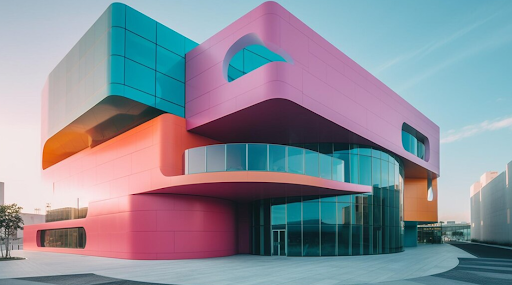
In the dynamic world of real estate, first impressions are often the most lasting. Potential buyers and tenants are drawn to properties that can visually communicate their potential and attractiveness. In this context, rendering plays a pivotal role.
Rendering is the art of creating lifelike visual representations of commercial properties. It helps architects, real estate developers, and agents present their projects to clients and investors in the most compelling way possible.
Understanding the Real Estate Boom
The real estate industry has seen tremendous growth and transformation in recent years. This boom has been driven by factors such as urbanization, population growth, low-interest rates, and changing preferences. As a result, the competition in the market is fierce, and standing out has become more challenging than ever. In this context, rendering has emerged as a powerful tool to gain a competitive edge.
Importance of Visual Representation
In the real estate world, a picture truly is worth a thousand words. Visual representation is key to conveying the essence of a property. Whether it’s an office building, a shopping mall, or an industrial warehouse, potential buyers and tenants want to see what they are investing in. Rendering offers a way to provide these stakeholders with a vivid glimpse into the future of a property.
Types of Commercial Properties
Commercial real estate encompasses a wide range of property types, including office buildings, retail spaces, industrial warehouses, and hospitality establishments.
Each property type has its unique features and requirements when it comes to rendering. For instance, retail spaces might require a focus on aesthetics and interior design, while industrial properties may prioritize functionality and logistics.
Technological Advancements in Rendering
Technological advancements have significantly influenced the way commercial properties are rendered. Traditionally, hand-drawn sketches and 2D drawings were the norm. However, with the advent of computer-aided design (CAD) and 3D modeling software, the process has become more efficient and realistic.
3D rendering services, in particular, have revolutionized the industry by allowing architects and developers to create immersive, interactive, and highly detailed representations of commercial properties.
Benefits of High-Quality Rendering
Investing in high-quality rendering services offers several advantages. Firstly, it provides a realistic vision of a property before it’s even constructed, helping potential buyers or tenants make informed decisions.
Moreover, it enables developers to showcase their properties more effectively, attracting investment and reducing the time properties spend on the market. High-quality rendering can also streamline the approval process, as it allows stakeholders to visualize the end result and provide feedback early on.
The Impact of 3D Rendering
3D rendering has become a game-changer in the real estate industry. It allows for the creation of interactive and interactive virtual tours of commercial properties. Potential buyers or tenants can explore spaces in detail, move through them, and even see how they might customize the interiors. This level of engagement is invaluable in the digital age, where online property listings and virtual viewings are increasingly popular.
Industrial Rendering in Commercial Properties
Industrial rendering plays a significant role in the real estate industry, particularly in commercial properties, where it helps developers, investors, and real estate professionals market and visualize their projects.
The “real estate boom” refers to periods of substantial growth and increased demand in the real estate market, which often results in increased construction and development activity.
It’s a valuable tool in the real estate industry, especially during real estate booms. It helps developers and professionals market their projects effectively, secure investments, and adapt to market trends. High-quality renderings are essential for presenting concepts, instilling investor confidence, and gaining a competitive edge in a fast-paced and competitive real estate market.
Challenges and Considerations
While rendering offers many benefits, it’s not without its challenges. One key challenge is ensuring accuracy and realism. If the rendering doesn’t closely match the final product, it can lead to disappointed clients and investors. Additionally, rendering can be time-consuming and costly, especially for larger projects. Developers must carefully weigh the investment against the potential returns.
Future Trends in Commercial Property Rendering
As technology continues to advance, rendering will evolve in several exciting ways. Here are some future trends to watch out for:
Augmented Reality (AR) and Virtual Reality (VR)
AR and VR technologies will play an increasingly important role in property rendering. These technologies will allow potential buyers or tenants to experience properties as if they were physically present, providing a more immersive and interactive experience.
Real-time Rendering
Real-time rendering will become more common, allowing for instant changes and adjustments during client meetings or presentations. This will streamline the decision-making process and lead to more efficient property transactions.
Sustainable Rendering
With the growing emphasis on sustainability in real estate, rendering will also focus on showcasing green and eco-friendly features of properties. High-quality, sustainable rendering can help attract environmentally conscious investors and tenants.
AI-Generated Rendering
Artificial intelligence will become a valuable tool in rendering, automating parts of the process and enhancing realism. AI algorithms will help create more natural lighting, textures, and even populate scenes with virtual people to give a sense of scale and activity.
Conclusion
Rendering is an essential tool in the real estate industry, particularly in the midst of a real estate boom. It allows developers and agents to present their properties in the most appealing and informative way, attracting buyers and tenants while reducing the time properties spend on the market. As technology advances, rendering techniques will continue to evolve, offering even more immersive and interactive experiences for potential clients. The future of commercial property rendering looks promising, with technology and creativity joining forces to drive the industry forward in innovative ways.
Interesting Related Article: “Essential Real Estate Terms for Homebuyers and Sellers“

